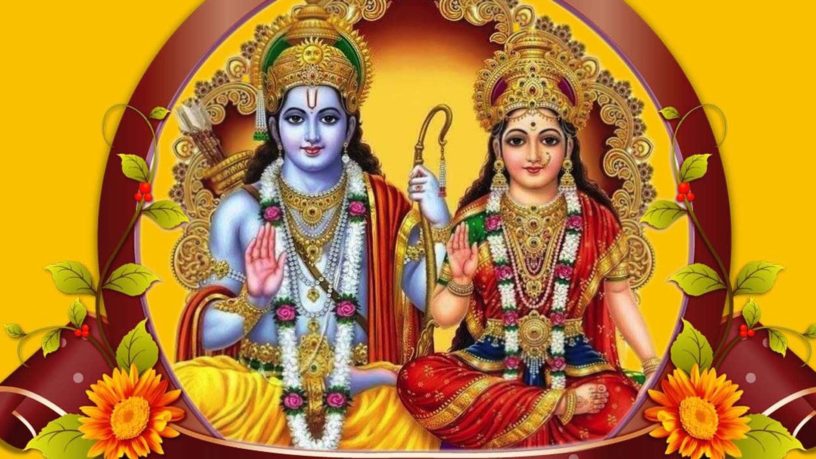In the Ramaayan, Sage Vishwamitra once asked King Dasharath that Shree Raam and Lakshman go with him to the forest to destroy two demons, Mareech and Subahu, who were disturbing his yagnas. Given that Sage Vishwamitra had taken a vow of non-violence, he was unable to despatch these demons on his own. He needed the help of Shree Raam and Lakshman. Shree Raam had previously gone on a tour of holy sites. When he returned, he was quite depressed with the futility of the world that he had observed. Seeing him in this state of dispassion, Vishwamitra Muni and his guru, Vashishtji, praised him. They said that he was exhibiting a good quality because the first stage in spiritual development is to realise that the world does not really bring you the happiness that you seek. Shree Raam expressed his analysis of the world: all things are impermanent. Here are the teachings of the sages in response to Shree Raam’s questions, as written in the Yoga Vashisht.
The Subtle Intellect
Vishwamitra Muni said: “O Raghav, best among the wise, there is nothing else to be known by you. By your own subtle intellect, you have known everything.”
In the world, there are many intelligent and smart people. This wisdom of which the sage speaks is wisdom of the self, of who we truly are, the Divine. In Sanataan Dharma, we have a view of the mind, as does Western psychology. The four functions of your mind are manas (the desiring mind), buddhi (the analysing mind, the intellect), chit (memory) and ahankaar (ego, strong identification with the body). The subtle intellect, of which the sage speaks, enquires into the nature of your own self. The sharp intellect focuses on the outside, on worldly achievements. The subtle intellect focuses within. The Truth is known to one with a single-pointed and subtle intellect. As long as we are focused on analysing the outside world, people, places and events, then the impure intellect is operating. The subtle intellect begins to ask, who am I really? Why am I here? What is this all about? This subtle intellect can only emerge when there is vairaagya or detachment.
First, you become disgusted with the world, realising that it cannot bring you happiness. This is the first step. Then the subtle intellect turns within, enquiring into the nature of the Self.
Liberation: The End of Desire
Sage Vishwamitra defines liberation and bondage: “O Raam, the exhaustion of vaasanaas (desires) is called liberation by the wise. The desire (vaasanaa) for objects is called bondage.”
We all want moksha (liberation), whether we are actively striving for it or not. However, beyond the vaasanaas, there are sanskaars or deep impressions within us. Some people crave money but not knowledge; some crave knowledge but not money. Others crave love, while some crave to murder. The root of these actions is sanskaar, which then leads to the vaasanaa. We then act on these desires. There are weak and strong vaasanaas. Sage Vishwamitra said that this state of exhausting good and bad vaasanas is called liberation.
The Importance of Self Effort
Thereafter, Vishwamitra Muni referred Shri Raam to his own guru, Sage Vashisht, whose duty it was to enlighten Him. Sage Vashisht said: “O Raghunandan, in this worldly existence, everything indeed is always accomplished in full by well-applied human or self effort.” At a deeper level, when you pray to the Divine, you are actually speaking to your own unrealised Self. We are in our present positions because of our past karmas. The only way to get out of these situations is through your own self-effort. Even if you follow the path of sharanaagati or self-surrender, it still requires self-effort. Shree Krishna said in the Bhagavad Gita, “Lift yourself by yourself; do not degrade yourself.” Only through self-effort can you achieve anything, including the realisation of the Supreme Being, that Divine Self.
From a Sunday morning service with Pt. Dr. Umesh Persad, Spiritual Leader, Gyaan Deepak Kirtan Mandali



